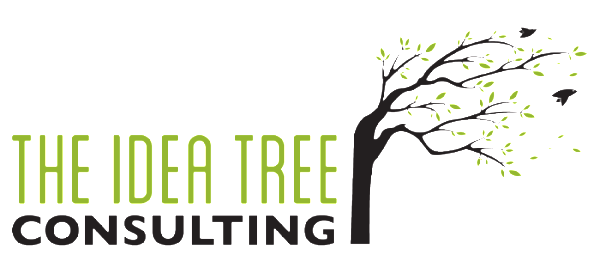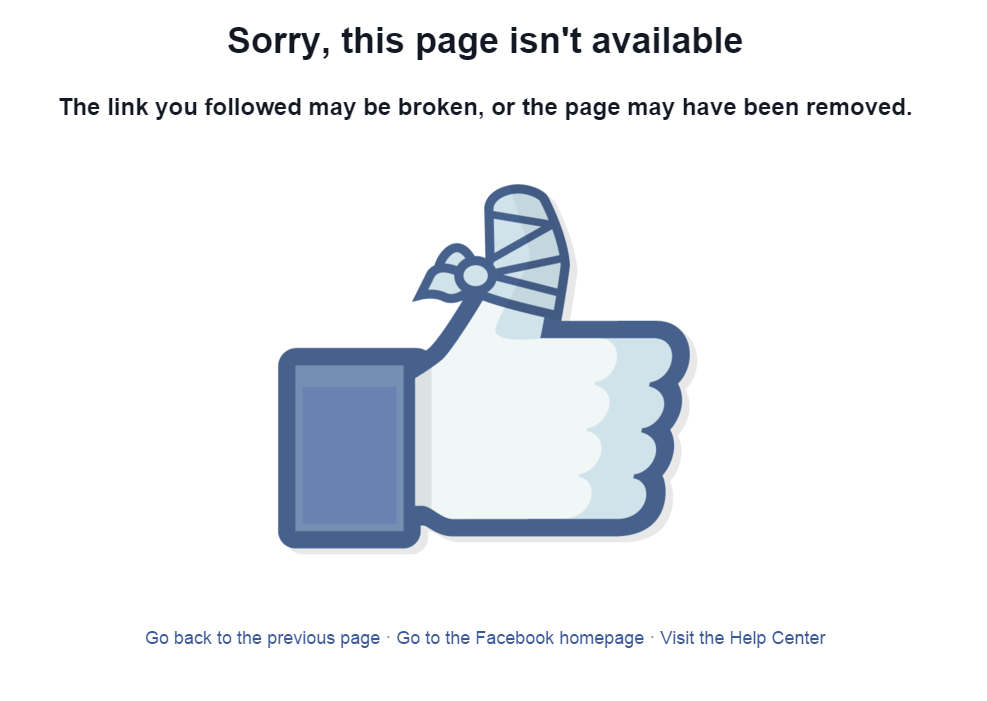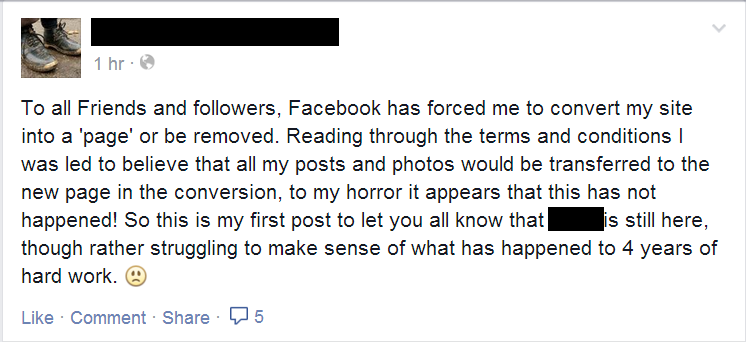Facebook page vs Facebook profile: what’s the difference and which one should your organization use?
Stephanie Ferguson, Social Media Specialist, The Idea Tree Consulting
January 30, 2015
One of the most common questions from organizations (and businesses) is should I use a Facebook profile or a page? What difference does it make? The answer is that organizations should definitely be using a page, and here are some of the top reasons why.
1. It technically violates Facebook’s terms of service and you can be deleted for using a personal profile for anything other than an individual person and Facebook does shut down these kinds of profiles. The last thing you want to see when you try to access your organization’s Facebook account is this (and I’ve personally seen it happen to groups who stuck to a profile, it’s heartbreaking):
This one reason is basically enough to avoid using a profile and create a page, but to distinguish the differences between a profile and a page further, I’ll continue the list.
2. You have a max of 5000 friends with a profile. What happens when your organization surpasses that number of fans? You can add a “follow” button to a profile, so that people potentially can receive in their news feed any public status update you post. This would be different from private status updates, which would go to your “friends” rather than your “followers.” This option is good if you are a public figure, for example, an author or perhaps an athlete. This doesn’t violate the terms of service because you are still an individual person using a profile though there is the option to create a page as a “public figure” as well.
3. Facebook pages look more professional than profiles and show you know what you’re doing. They’re designed to be used by businesses and organizations, whereas profiles are designed to be used by individuals. For example, the default for the top left corner of a profile, is a box containing information for where an individual has worked, where they went to school, their current city and their hometown; not relevant if you’re an organization! And it’s annoying as an account manager to constantly be asked what movies your organization has seen or what kind of music you like. However with a page, the top left corner contains your number of likes and an “about” box, which you can fill with a couple lines about your organization to quickly help visitors understand what you’re working for.
4. With a page you get “Insights” which is data about when your fans visit your page, where they’re generally located, which of your posts are most popular, and much, much more. You can use this data to figure out when is the optimal time to post content, where geographically you may need to build up your fan base, and what kind of content is likely to be popular, just for starters.
5. With a profile you must give each person who runs the page the user email and password for the account. With a page you can assign admin roles instead, with different levels of authority.
6. With a profile, people must submit a friend request and have it approved before they can see your content (if you have privacy settings set up). This causes a delay in which their interest may wane. Again this can be avoided with a “follow” button, but people who use Facebook regularly may note the difference between large organizations, brands or businesses which they “like” and individuals who they “friend.” Again, using the correct method makes you seem more professional and capable.
7. If you use a profile you can’t become a “suggested page” or “suggested related content” that Facebook suggests to its users based on what they already “like” or links/stories they’ve clicked on. You’ve probably seen this when using Facebook yourself. With a profile you may be suggested to someone as “do you know so-and-so” because Facebook recognizes you as a potential “mutual friend.” The first method, with a page, spreads awareness of your page based on content and interest, while the second is based on whether or not someone who is already friends with the profile might also know you, limiting your chances of spreading your organization to a wider audience.
8. A page more easily allows you to control the messaging, branding and content that represents your organization. This is because any of your friends can post to your profile, and the most recent content that anyone has posted, you or your friends, is what is visible on your profile first. Someone can post something totally off topic, rather than the focus of your issues, or for example your most recent post that you want to be the first thing anyone sees. People can still post something to a page, but it has its own side box, rather than being prominently displayed in the main part of the screen.
9. Facebook pages have features which are not available on profiles, such as promotions and contests. The most important feature that a page has that profiles do not is the ability to schedule posts. On a page when you draft a status update or a post there is a time clock icon at the bottom which allows you to set the time and date for when the content will be posted. You can sit down on a Tuesday morning, for example, and draft 3 posts for the upcoming week, schedule them all and have your Facebook social media taken care of for the week, instead of needing to come back to it all the time, or trying to save or remember content for when you’re able to post it. This feature is simply the single most important feature that will make your life easier in managing your organization’s social media and one of the best reasons to have a Facebook page, rather than a profile for your organization.
10. With all of the above being said, Facebook pages definitely have one weakness, which may be especially frustrating to very small local groups. You cannot invite the fans of your page to an event your page creates. So for example, if you’re a gardening group that will never expand beyond a single town or city, and you regularly want to invite people to volunteer gardening sessions or tours, this functionality would not be available to you as a page. But you could also consider using a Facebook group for this purpose instead.
If you are using a profile for your organization, it’s not too late, you can convert it into a page. For more information and instructions on how to migrate your organization’s profile to a page, see this link: https://www.facebook.com/help/175644189234902/. Be warned though, this process will migrate only your profile/cover photos and turn your friends into likes. It doesn’t transfer any existing posts or photos that you’ve uploaded to the profile (which is all the more reason to be sure you choose a page at the start!), though you can download this information and repost it later. As an alternative, you can also create a page, and advertise on your existing organization profile for a period of time that you’d like your friends to move over there and become fans, and eventually delete or deactivate the profile. Over time your page will grow and accumulate content just as the profile did and you’ll no longer need to worry about one day logging in to find everything has disappeared.
Further Reading:
http://blogs.constantcontact.com/product-blogs/social-media-marketing/facebook-page-or-profile/
http://www.jonloomer.com/2012/09/03/benefits-of-a-facebook-business-page/
http://ustandout.com/facebook/should-i-create-a-facebook-page-or-profile-to-promote-my-business
http://michaelhyatt.com/facebook-profile-vs-page.html


